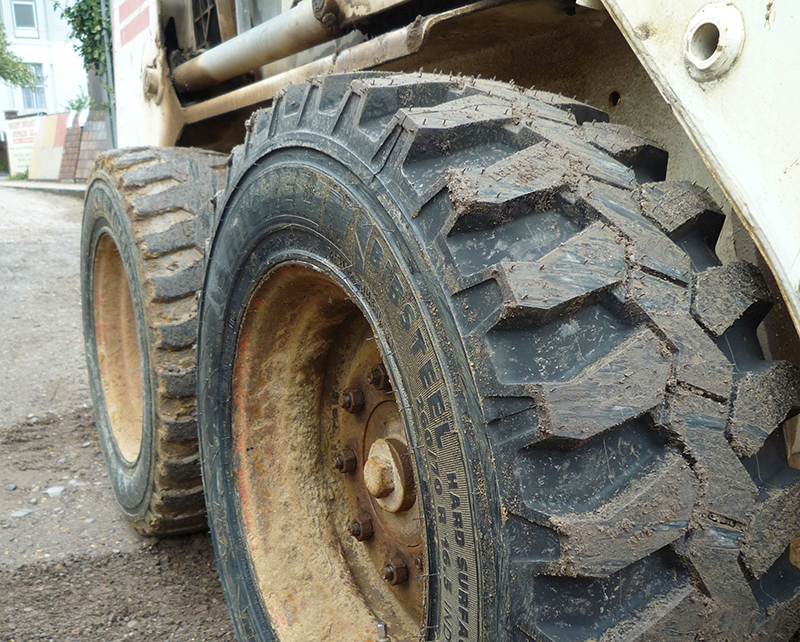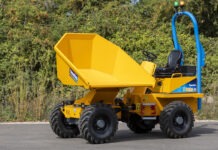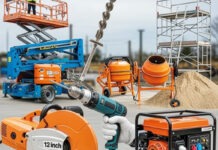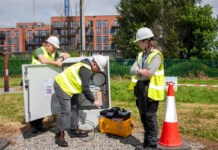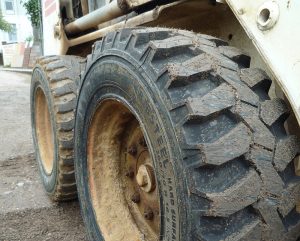 Michelin has issued special guidance for construction plant operators laying up machines for extended periods during the COVID-19 pandemic, with work at many construction sites and infrastructure projects now either halted or operating at significantly reduced capacity.
Michelin has issued special guidance for construction plant operators laying up machines for extended periods during the COVID-19 pandemic, with work at many construction sites and infrastructure projects now either halted or operating at significantly reduced capacity.
Gordon Brookes, Michelin’s Customer Engineering Support Manager – Off Highway Transportation, has detailed steps to follow before laying up wheeled plant, including backhoe loaders, excavators, skid-steers and telehandlers. The advice also covers periodic inspections and how to prepare plant to re-enter service.
He advises: “To carry the weight of a parked machine indefinitely tyres need to be prepared, so it’s essential construction firms and plant hire companies follow guidance to ensure assets can quickly return to service when normal operations resume, and without the need to replace tyres unnecessarily.”
Preparing vehicles
To prepare a machine for extended parking, Brookes advises all tyres should be inspected for visible damage including the tread area and sidewalls, right down to the rim – looking for cuts, bulges, tears and abnormal wear.
Tyre damage is more prevalent during winter months, when the climate is typically wetter, as water is a lubricant to rubber, allowing sharp objects to penetrate tyre casings more easily than in the dry. This makes inspections prior to storage even more important, given the significant rain seen during the first quarter of the year – and making now the ideal time to repair any damage.
The cause of any abnormal wear should be investigated and rectified.
Cold tyre inflation pressures should be checked and adjusted for all tyre positions. If machinery is likely to remain stationary for extended periods of time, it is best to inflate the tyres to slightly higher-than-standard operating pressures to minimise deflection whilst inactive, while ensuring the manufacturer’s maximum inflation pressure is not exceeded. By doing so, tyres will be less likely to develop ‘flat spots’ – which can result when one section of the casing is being deflected for long periods, causing massive vibration on the road.
Firms should also ensure each valve is fitted with an appropriate valve cap.
During extended parking
Every four months a machine should be driven around the yard or site where possible – or if space is at a premium and assets cannot be moved, the tyres should be rotated a quarter turn. However, before any piece of plant is moved, check visually for signs of under-inflation and if a tyre is deemed to require attention, re-inflate it first.
Re-entry into service
Before commissioning any vehicle back into operation, check the cold tyre inflation pressure of all tyres and adjust in line with the tyre manufacturer’s guidance – remembering to reduce pressures if they had previously been increased prior to storage.
Commenting on the advice, Brookes says: “The very notion of parking assets for extended periods is unfamiliar for most firms, particularly given the levels of activity we’ve become accustomed to seeing in the construction sector. However, these are important steps and will help to protect the condition of the tyres and ensure they remain ready to get back to work.”
Firms seeking further tyre advice are encouraged to contact their Michelin tyre dealer or visit https://agricultural.michelin.co.uk/uk (for tyres used for light construction, civil engineering, road work, farm work and landscaping).


